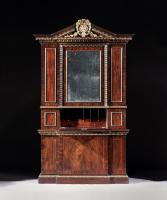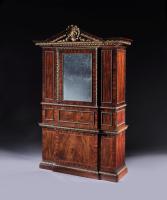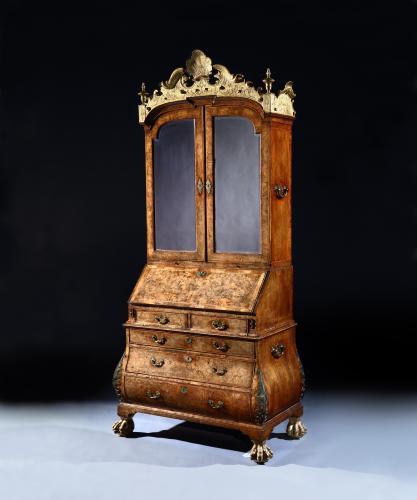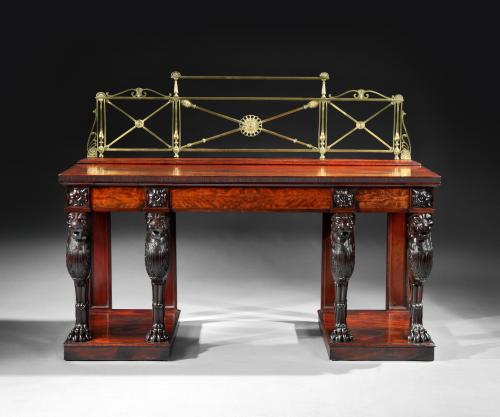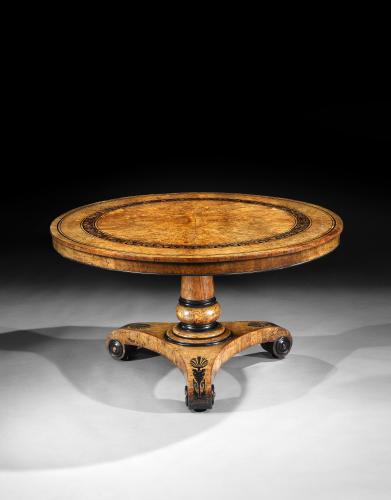
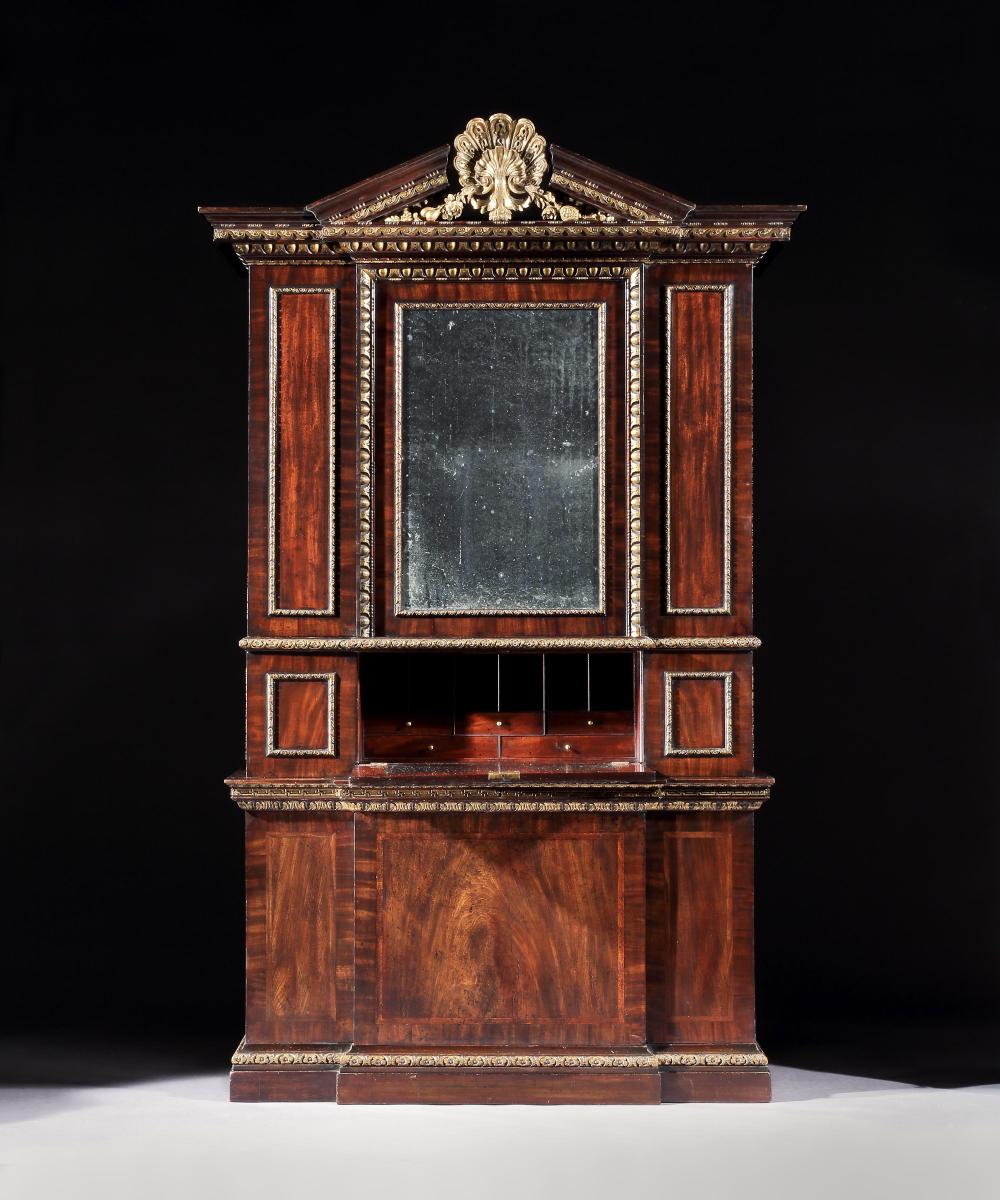
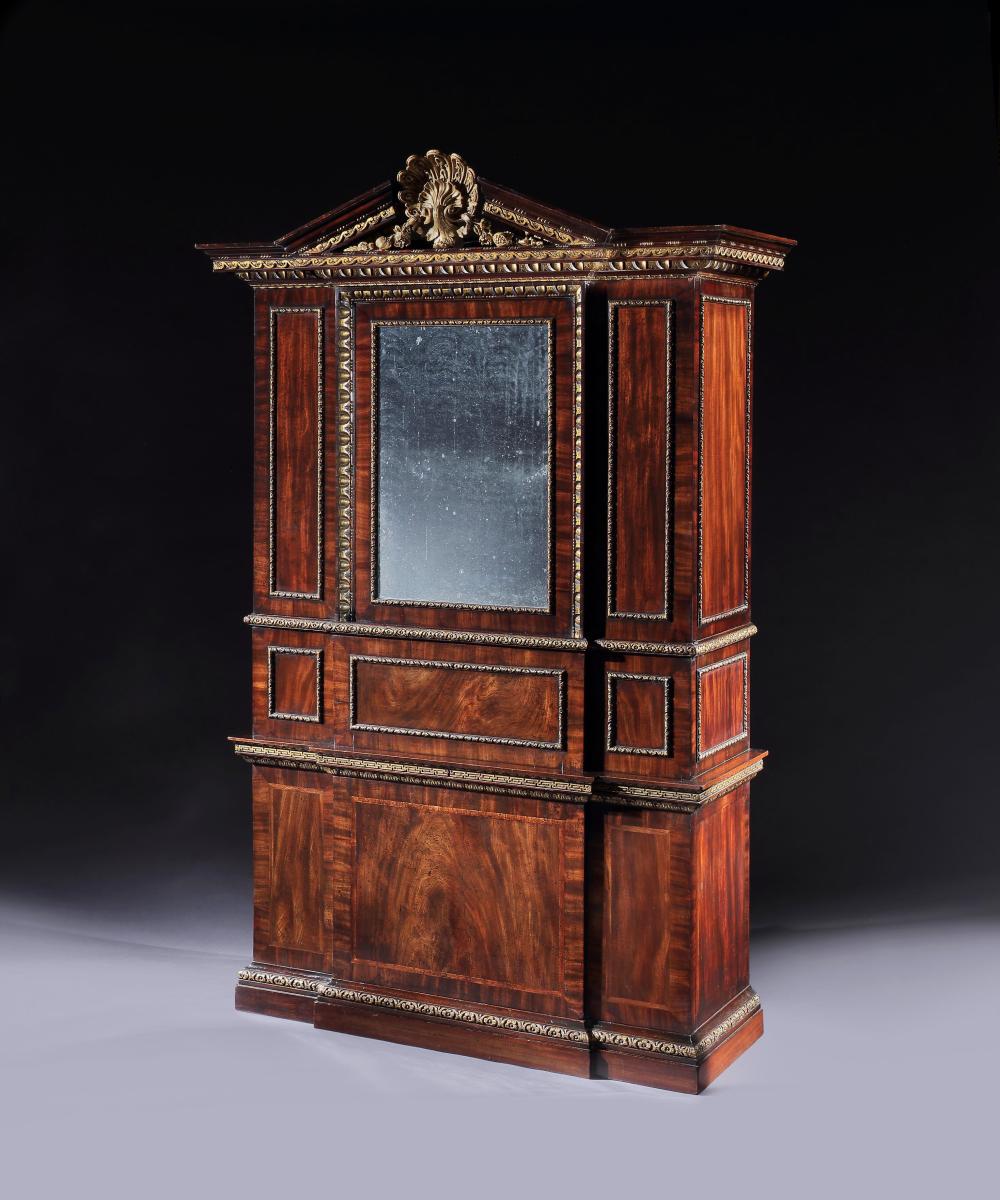
Price on application
This object is eligible for a Certificate of BADA Provenance
The BADA Standard
- Since 1918, BADA has been the leading association for the antiques and fine art trade
- Members are elected for their knowledge, integrity and quality of stock
- Our clients are protected by BADA’s code of conduct
- Our dealers’ membership is reviewed and renewed annually
- Bada.org is a non-profit site: clients deal directly with members and they pay no hidden fees
A George II Mahogany and Parcel Gilt Breakfront Secretaire Cabinet Attributed to William Hallett.
English, circa 1740.
The cabinet surmounted by a broken pediment with central carved and gilded cartouche with pendants of fruit and flowers. The parcel gilded cornice, carved with Virtruvian scrolls, bead and reel and egg and dart moulding. The central mirrored door bordered by rosette and ribbon moulding with a bold egg and dart frame with concealed escutcheons enclosing adjustable shelves. The secretaire drawer below with parcel gilded guilloche moulding with rosette and ribbon, opening to reveal an arrangement of small drawers and pigeonholes. The lower section with double-hinged doors veneered in well-figured flame mahogany over a stepped plinth with parcel gilded flower and dart moulding.
The architectural form of this extraordinary mahogany breakfront cabinet is clearly inspired by the influential designer, William Kent (c. 1685-1748) and has distinct similarities to a group of similar bookcases, differing slightly in carved details and the inclusion of either mirrored, glazed or panelled elements. Here, the Palladian style and details of Virtruvian ribbon scroll, egg-and-dart, beaded reed string and flowered-ribbon guilloche derive from ‘chimney piece with over mantel’ patterns in Isaac Ware’s Designs of Inigo Jones and Others (1731).
The strong architectural design, overall Palladian form, the use of superior mahogany and the sharpness of the distinguished carving suggest that it is the work of the pre-eminent London cabinet-maker, William Hallett (1707-81). Hallett, who made furniture for George II, was one of the most fashionable makers of the second half of the 18th century. As a leading maker craftsman of his time, he pioneered the work of esteemed makers that followed, including William Vile, John Cobb and Thomas Chippendale. Based first in Great Newport Street and then St Martin’s Lane, London, he established himself as a great cabinet-maker, leaving an impressive body of work with an outstanding quality of carving and of sophisticated design.
A labelled cabinet by Hallett dated 1763 from the Colonel Norman Colville collection is illustrated in A. Coleridge, op. cit., pl. 69-71. A similar pair of cabinets also conforming to the Hallett’s style was formerly in the collection of HRH Princess Mary, Princess Royal and Countess Harewood. A similar one belonged to Mrs C. Bouverie-Pusey, formerly of Pusey House, Berkshire.
A mirror from Ragley Hall shares an almost identical cartouche, clearly by the same hand.
Dimensions
Height: 92 in (235cm) Width: 52 in (132cm) Depth: 19 in (48cm)Stock number
REF852The BADA Standard
- Since 1918, BADA has been the leading association for the antiques and fine art trade
- Members are elected for their knowledge, integrity and quality of stock
- Our clients are protected by BADA’s code of conduct
- Our dealers’ membership is reviewed and renewed annually
- Bada.org is a non-profit site: clients deal directly with members and they pay no hidden fees


